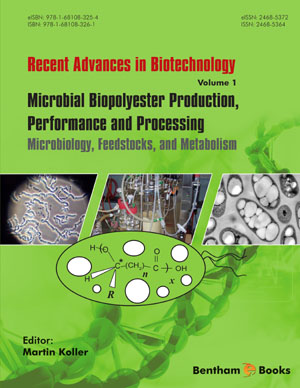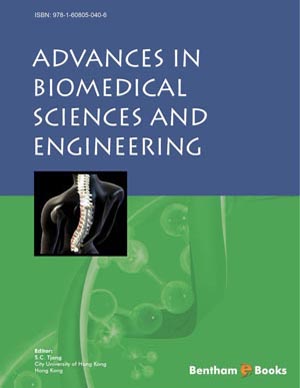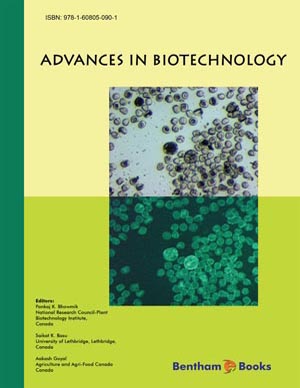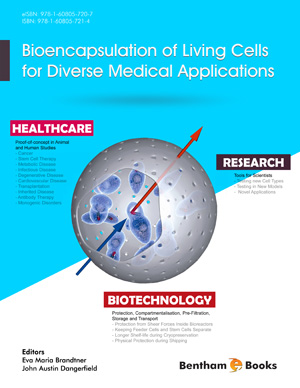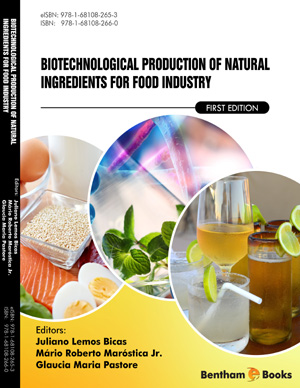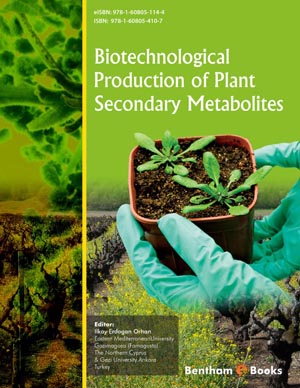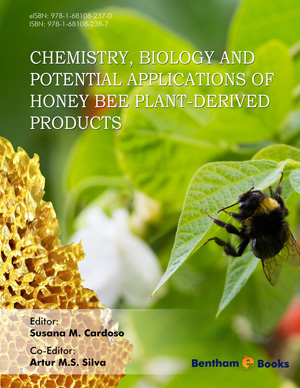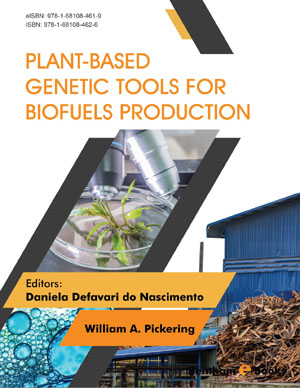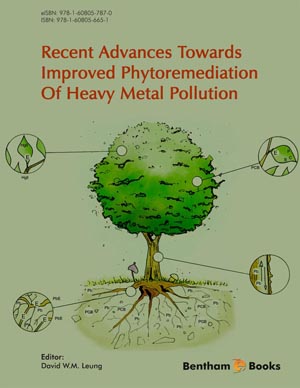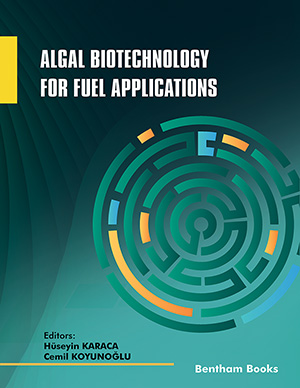Book Volume 1
Novel Inexpensive Feedstocks from Agriculture and Industry for Microbial Polyester Production
Page: 3-99 (97)
Author: Stanislav Obruca, Pavla Benesova, Dan Kucera and Ivana Marova
DOI: 10.2174/9781681083254116010004
PDF Price: $30
Abstract
Polyhydroxyalkanoates (PHAs) are very promising materials which might serve as environmentally-friendly alternative to petrochemical plastics. The main obstacle preventing PHAs from entering the market massively is the final cost of the polymeric material, important portion of which is attributed to carbon substrate. Hence, the researchers have been intensively looking for cheap substrates enabling sustainable production of PHAs. Hence, this chapter summarizes the advances in biotechnological production of PHAs from various waste products originating from industries of different fields, especially from food industry and agriculture.
PHA Biopolyester Production from Surplus Whey: Microbiological and Engineering Aspects
Page: 100-174 (75)
Author: Martin Koller, Lukas Marsalek and Gerhart Braunegg
DOI: 10.2174/9781681083254116010005
PDF Price: $30
Abstract
As the lactose-rich aqueous fraction that remains during the cheese production process after separating casein proteins and lipids from whole milk, whey accrues as an industrial by-product at vast quantity at dairies and cheese production manufactories.
The volumes of generated surplus whey almost equal those of the whole milk processed for cheese production, thus by far surmounting the needs of its restricted classical markets such as animal fodder, pharmaceutical matrices, or additives in food production. As a consequence, enormous quantities of whey are contemporarily disposed in aquatic environments, provoking prevailing ecological concern due to its considerable biochemical oxygen demand, and high expenses for the disposal. Hence, sustainable alternatives for a value-added application of surplus whey are needed; contemporarily, biotechnologists in various global regions are questing for such alternatives! Based on the catalytic action of selected microbial production strains, the spare carbon source contained in whey can be converted into value-added bio-products and at the same time, solve the industrial disposal problem.
Polyhydroxyalkanoates (PHA), a group of biodegradable microbial polyesters with auspicious plastic-like material characteristics, are among the most promising target products accessible from whey´s bio-conversion. Using different production scales, production strains and production modes, excess whey can undergo upgrading to a carbon feedstock for generation of thermoplastic poly(3-hydroxybutyrate) (PHB) homopolyester or, by switching to advanced feeding strategies and application of powerful novel production strains, to tailor-made PHA co- and terpolyesters with customer-oriented material properties. The article covers microbiological, engineering, and economic aspects of whey-based PHA production by meso- and extremophile wild-type or genetically engineered prokaryotic production strains. The route needed to make efforts in this field competitive with current PHA-production on prized feedstocks which in parallel interfere with nutrition for mankind, is presented. This competitiveness is addressed both in environmental and economic aspects.
Biopolyesters and Related Valuable Products in Phototrophic Microbes
Page: 175-225 (51)
Author: Péter B. Kós, András Fülöp and Gábor Rákhely
DOI: 10.2174/9781681083254116010006
PDF Price: $30
Abstract
Poly(3-hydroxyalkanoates) are widely used environmentally sound bioplastic produced by numerous microbes including anoxygenic and oxygenic photosynthetic bacteria. Similarly to heterotroph microbes, the photosynthetic microbes can accumulate these polyester-type storage materials under nutrient limitation such as nitrogen, phosphorous or sulfur starvation. A number of purple non-sulfur, sulfur photosynthetic and cyanobacteria can produce PHA of various compositions. The amount, type, length and monomer composition of the PHA strongly depend on the nutrients and the growth conditions, and the light intensity also seriously affects the yield. While anoxygenic photosynthetic microbes need external inorganic or organic electron source, for photosynthetic CO2 fixation, the oxygenic microbes, cyanobacteria can gain electron from water splitting. In principle, anoxygenic photochemolitoautotrophic and cyanobacteria can produce PHA from CO2 as sole carbon source, but addition of organic substrates significantly improves the yield. PHA can also be decomposed by the cells under certain conditions and the PHA metabolism has connections to other metabolic routes including glycogen metabolism. There are several approaches for improving the production rate and yield and – for this purpose – a number of artificially genetically modified microorganisms, metabolic routes were constructed.
Biopolymer Production by Mixed Microbial Cultures: Integrating Remediation with Valorization
Page: 226-264 (39)
Author: Luísa Seuanes Serafim, Diogo Queirós, Simona Rossetti and Paulo Costa Lemos
DOI: 10.2174/9781681083254116010007
PDF Price: $30
Abstract
Polyhydroxyalkanoates (PHA) production by mixed microbial cultures (MMC) became the central point of many research works. Firstly discovered in wastewater treatment systems, namely those related with biological phosphorus removal, it became a process to be considered for polymer production intended to replace petrochemical derived plastics. The ability to store PHA provides microbial communities a competitive advantage for survival under transient conditions typical of waste treatment systems. In this way, MMC can continuously adapt to the operational conditions increasing the number PHA-storing organisms with minimum requirements of sterility. MMC can produce PHA using waste or industrial by-products as substrates, allowing for their valorization. The use of waste, together with the lower requirements in sterility and process control, could signify a decrease on PHA production costs. The price is one of the main drawbacks that prevent the increase of world PHA market share. This chapter intends to contextualize the use of MMC for PHA production, by describing the different approaches and compare them with the traditional processes employing pure or genetically modified organisms. The main processes to select PHAstoring MMC are discussed, namely alternating of anaerobic and aerobic (AN/AE) or anoxic (AN/AO) conditions and aerobic dynamic feeding (ADF). The use of wastes as substrates, the operational conditions, the microorganisms involved as well as the molecular methods used for their identification are also the focus of this work.
Ralstonia Eutropha and the Production of Value Added Products: Metabolic Background of the Wild-Type Strain and its Role as a Diverse, Genetically-Engineered Biocatalyst Organism
Page: 265-347 (83)
Author: Christopher J. Brigham, Abdulrahman A. Kehail and Jacob D. Palmer
DOI: 10.2174/9781681083254116010008
PDF Price: $30
Abstract
Ralstonia eutropha (a.k.a., Cupriavidus necator) is at the forefront of the research movement towards sustainable bioproductions. There are two principal reasons for the popularity of R. eutropha in this arena: 1) the organism has a versatile metabolism and can utilize a wide variety of carbon sources from sugars and lipids to carbon dioxide and aromatic compounds for growth and fermentative bioproductions, 2) it can store a large amount of carbon as intracellular polymer. R. eutropha is known as the model system for polymer (polyhydroxyalkanoate) biosynthesis and mobilization. Many valuable works have been published on this specific topic. In the recent years, however, R. eutropha is being used as a host organism for heterologous bioconversions, such as biofuel synthesis. Again, researchers are exploiting the metabolic versatility of the organism to create novel products and processes. This chapter chronicles the key discoveries of R. eutropha biology and presents the biomanufacturing context that inspired many research groups to tailor the organism as a novel biocatalyst.
PHBHV Biosynthesis by Haloferax mediterranei: from Genetics, Metabolism, and Engineering to Economical Production
Page: 348-379 (32)
Author: Hua Xiang
DOI: 10.2174/9781681083254116010009
PDF Price: $30
Abstract
The halophilic archaeon Haloferax mediterranei, has shown promise for the production of poly(3-hydroxybutyrate-co-3-hydroxyvalerate) (PHBHV), a desirable bioplastic, from many low-cost carbon sources. To obtain a full understanding of PHBHV biosynthesis and to provide novel strategies for polyhydroxyalkanaote (PHA) production by haloarchaea, the complete genome of H. mediterranei has been determined, and a genome-wide investigation of the genetics and metabolism of this haloarchaeon involved in PHBHV biosynthesis was performed in the past few years. This exploration covers the identification of key genes for PHBHV biosynthesis, the specific precursor supplying pathways, the PHA granule modulation, and PHBHV mobilization, as well as its linkage to haloarchaeal-specific acetyl-CoA and propionyl- CoA assimilation. These advances have not only revealed many haloarchaeal-specific enzymes and pathways for PHBHV biosynthesis, such as the archaeal-type PHA synthases, the haloarchaeal-type β-ketothiolases with two distinct subunits, and the novel 3-hydroxypropionate pathway coupling CO2 fixation into PHBHV, but have also provided strategies for bioengineering haloarchaea for economical production of PHBHV or tailor-made higher-value PHA. This chapter will summarize these current progresses of PHBHV biosynthesis by H. mediterranei, thus providing a perspective for economical production of industry-scale or higher-value PHAs by haloarchaea in the near future.
Bacterial Genetic Modifications for Improving Polyhydroxyalkanoates Production from Inexpensive Carbon Sources
Page: 380-435 (56)
Author: Sergio Casella, Lorenzo Favaro and Marina Basaglia
DOI: 10.2174/9781681083254116010010
PDF Price: $30
Abstract
There are several phases of the PHA production chain where genetic tools may help, starting from the microbial strain isolation and characterization, through all the production steps, until the downstream processes.
Leaving aside the huge number of genetic modifications accomplished on many bacterial species to clarify basic biochemical, genetic and metabolic aspects of PHA metabolism, several interesting attempts have been reported aimed at improving the performance of the microorganisms showing potentiality for a possible production process.
Most of the available information deals with the use of genetic tools for (i) characterization and identification of new isolates, (ii) testing new isolates for the presence of relevant genes involved in PHA production/degradation, (iii) metagenomic approach in complex environments for searching relevant genes (and strains), (iv) assessment of PHA genes expression and control of depolymerase genes, (v) metabolic engineering of producing and not producing bacterial strains, (vi) improving downstream processes, (vii) making PHA producing strains able to utilize different carbon sources (simple sugars, fats, starch-lignocellulose, other complex substrates), (viii) cloning PHA genes in other recipient bacteria.
Due to the huge amount of results published in each of the above fields, after a general overview on the methods used to search for new PHA producing microbial strains, this chapter will try to summarize the most relevant results obtained through genetic engineering tools for the production of PHAs from cheap carbon sources in view of possible industrial applications.
Medium-Chain-Length Poly-3-hydroxyalkanoates
Page: 436-473 (38)
Author: Bruce A. Ramsay
DOI: 10.2174/9781681083254116010011
PDF Price: $30
Abstract
Medium-chain-length poly-3-hydroxyalkanoates (mcl-PHAs) were discovered in the 1980s, 60 years after their more famous biopolyester ancestor poly-- -hydroxybutyrate. Accumulated only by a group of related Pseudomonas species, these polyesters are remarkable in their structural diversity and applications. mcl-PHAs are highly water resistant, yet readily susceptible to enzymatic degradation. They can be used in packaging, paints, toners, adhesives and in many biomedical applications but have yet to be produced commercially. mcl-PHAs are most efficiently produced from carboxylic (fatty) acids such as octanoic acid but can also be produced from many nonrelated substrates such as glucose. Recent advances in fermentation and separation processes, as well as strain development are improving polymer quality and reducing production cost, which should soon lead to the adoption of mcl-PHAs by industry.
Introduction
Global plastic production is estimated to be over 300Mt annually. Most conventional plastics are predominantly produced from fossil fuels and are highly resistant to biodegradation, and only a small share of about 20% of spent plastics is believed to be recycled, which is a cause for environmental concern. Biodegradable plastics would solve this concern as they are a sustainable alternative, yet these do not even cover 5% of the global plastic market. Microbial polyhydroxyalkanoates (PHAs) are a versatile group of polyesters produced by nature as prokaryotic storage materials. PHAs can be produced through sustainable bioprocess engineering and have displayed remarkable flexibility in their physical and chemical properties. PHAs are the subject of several scientific papers and numerous PHA patents have also been filed, generating significant interest in the plastic production industry. To develop overall sustainable and efficient production processes, all bioprocess steps need to be thoroughly understood and accounted for. These processes start with the selection of suitable inexpensive raw materials (microbes and enzymes), optimizing the process engineering and process regime, and conclude with the enhancement of product recovery in terms of time, energy, and material input. Microbial Biopolyester Production, Performance and Processing: Microbiology, Feedstocks, and Metabolism encompasses eight chapters that cover aspects of the microbiology and biotechnology of producing biodegradable plastics. The contents focus on the selection of powerful archaeal and eubacterial production strains, genetic engineering as a tool for optimized PHA production and inexpensive carbon sources for microbial cultures. The volume is a useful resource for bioprocess engineers, microbiologists, biotechnologists and chemical engineers interested in the basics of biodegradable plastic production. Recent Advances in Biotechnology is a book series comprising of peer-reviewed reference works and monographs that compile the latest developments in the field of biotechnology. Each volume has a thematic focus and features topical reviews written by experts. The series will highlight multidisciplinary perspectives to interested readers (biotechnologists, microbiologists, bioprocess engineers, agronomists, medical professionals, sustainability researchers etc.)

